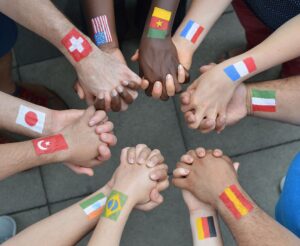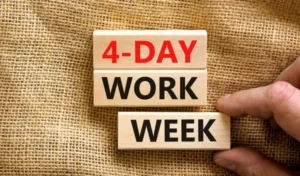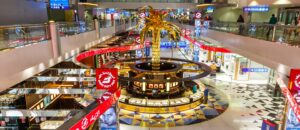A Contemporary Approach for Navigating Fast-Changing Dynamics in the Emirates
Introduction
The UAE has always been a land of ambition and its workplaces reflect that energy. Over the past few years, the country has experienced a profound transformation. New regulations, accelerated digitalisation and the post-pandemic reset have redefined how organisations operate.
 High-performance teams in UAE’s multicultural workplaces
High-performance teams in UAE’s multicultural workplaces
As hybrid work becomes mainstream, flexible hours become the norm and Emiratisation policies reshape workforce structures. Leaders across the Emirates are asking a crucial question:
How do we build truly high-performing teams in one of the most multicultural environments on the planet?
The UAE is not just a business hub. It is a cultural mosaic, where professionals from over 200 nationalities collaborate daily. This creates immense potential, but it also demands a fresh approach to leadership and performance.
To understand what drives success in such a dynamic environment, leaders need to start by rethinking what high performance really means today.
Rethinking High Performance: Moving Beyond Traditional Metrics
For leaders aiming to build high-performance teams in UAE multicultural workplaces, the first step is to move beyond traditional metrics.
For years, performance meant numbers in terms of sales, targets, speed and efficiency. Those metrics still matter, but in the UAE’s dynamic and diverse workplaces, they tell only part of the story. High performance today depends on how teams adapt, connect and collaborate across cultural lines.
A new measure of success is emerging: cultural agility. This is the ability to shift one’s approach, communication and thinking based on who is in the room. In multicultural teams, agility often matters more than uniformity.
 The UAE government introduced a shorter workweek for federal employees and flexible summer hours for Dubai’s public sector. The aim was not only productivity but balance, wellbeing and inclusivity.
The UAE government introduced a shorter workweek for federal employees and flexible summer hours for Dubai’s public sector. The aim was not only productivity but balance, wellbeing and inclusivity.
Similarly, remote work policies have evolved from emergency responses to strategic advantages. And with Emiratisation gaining momentum, leaders are now tasked with blending local and expatriate talent into cohesive units.
Performance in the Emirates, therefore, is no longer about efficiency alone. It is about flexibility, empathy, and shared growth.
As leaders redefine performance, the next natural step is to understand the diverse human fabric that makes the UAE workplace so unique.
The Multicultural Mosaic: Understanding the UAE Workforce
Step into any UAE organisation and you will hear a blend of accents, languages and ideas. It is common for one team to include professionals from India, the Philippines, Egypt, the UK and the UAE, all bringing their own work styles and expectations.
This diversity is a tremendous strength, but it also presents challenges. Communication gaps, misunderstandings and cultural blind spots can create friction. Some cultures value hierarchy, while others thrive on informal collaboration. Even the meaning of a “yes” or “no” can differ dramatically.
The key for leaders is to recognise that diversity is not an obstacle; it is a strategic advantage. A multicultural team mirrors the global customer base the UAE serves. When managed well, it becomes a think tank of innovation and problem-solving.
However, diversity alone does not guarantee success. It must be supported by leadership that knows how to harness it inclusively and respectfully.
Building the Foundation: Inclusive Leadership in Action
High-performance teams do not happen by chance. They are built through leadership that values inclusion, respect and trust.
 Inclusive leadership in the UAE has a distinct flavour. It requires sensitivity to religious practices such as daily prayers and Ramadan, awareness of local customs and respect for national identity. The end game is to create psychological safety.
Inclusive leadership in the UAE has a distinct flavour. It requires sensitivity to religious practices such as daily prayers and Ramadan, awareness of local customs and respect for national identity. The end game is to create psychological safety.
When people feel heard and valued, regardless of their nationality or background, they contribute more confidently. Leaders can build that environment by asking for diverse opinions, being transparent about decisions and encouraging open dialogue.
Real-time adaptability also matters. In multicultural teams, decisions are rarely linear. A good leader senses when to pause, when to consult and when to move forward.
This balance of firmness and empathy turns a group of individuals into a team that performs under pressure.
Inclusive leadership, however, is only as strong as its ability to communicate effectively across cultures.
Practical Steps for Leaders and Teams
- Being open to other cultures is a skill. In diverse teams, good intentions are not enough. Leaders and team members need small, consistent actions that build understanding.
- Start with self-awareness. Notice how your own background shapes what you see as “normal.”
- Create space for cultural sharing. A short session where team members talk about a value or custom from their culture can build real empathy.
- Rotate meeting leads so different styles get a chance to shine.
- When something feels unfamiliar, ask what it means instead of judging it.
- Celebrate cultural occasions the way people want, not how you assume they should.
These simple practices turn differences into connection and make openness a daily habit, not a one-time effort.
Communication Reimagined: From Words to Connection
 As I have observed in several multicultural teams, communication is often where collaboration either thrives or breaks down. Speaking the same language does not guarantee understanding. Meaning often hides between words, in their tone, intent and silence.
As I have observed in several multicultural teams, communication is often where collaboration either thrives or breaks down. Speaking the same language does not guarantee understanding. Meaning often hides between words, in their tone, intent and silence.
A client once shared their experience working with a hospitality group in Dubai that had over fifteen nationalities on one team. During meetings, the European staff would share ideas openly, while their Asian counterparts stayed quiet, even when they had strong views. It was not a lack of ideas, it was a difference in communication culture. When the leadership recognised this and created space for every voice to be heard, participation and creativity doubled within a month.
That experience reminded me that communication is not just about speaking clearly; it is about connecting meaningfully. Leaders who build “communication intelligence” create teams that listen deeply and respond with empathy.
Digital tools such as live captioning or multilingual collaboration boards can support this, but they are only enablers. The real power lies in leaders who pause to ask, “How did that land for you?” or “What do you think?”
Because in the end, connection builds trust.
And when trust is built, it becomes easier to rally people around something even more powerful: shared purpose.
Digital tools can support this effort. Translation applications, live captioning in virtual meetings and visual collaboration platforms such as Miro or FigJam help bridge divides.
But tools alone are not enough. Regular feedback sessions, clear expectations and open two-way conversations are essential. The goal is not just to speak but to connect and connection breeds trust.
And when trust is built, it becomes easier to rally people around something even more powerful: shared purpose.
Through a Cultural Lens: Same Gesture, Different Meaning
Culture changes how we read even the smallest cues.
- Silence may mean respect in some Asian cultures, but discomfort in Western ones. Direct feedback feels honest to some, harsh to others.
- Eye contact shows confidence in one culture and confrontation in another.
- Even a “yes” can mean “I understand” rather than “I agree.”
The goal isn’t to learn every rule but to stay curious.
- Ask before assuming.
- Clarify meaning before reacting.
When leaders do that, they turn confusion into connection and build teams that truly understand one another.
Crafting a Shared Purpose: The Glue that Unites
 When I look at teams that consistently outperform, one thing always stands out — they know why they exist together. In multicultural workplaces, purpose acts like gravity. It pulls people of different nationalities, beliefs and experiences into a single orbit.
When I look at teams that consistently outperform, one thing always stands out — they know why they exist together. In multicultural workplaces, purpose acts like gravity. It pulls people of different nationalities, beliefs and experiences into a single orbit.
A senior HR leader from a construction firm in Sharjah once told me how their multicultural project teams often clashed despite clear communication. Everyone knew what they were supposed to do but not why they were doing it together.
The management finally decided to pause and involve everyone from engineers to site supervisors in defining what the project truly stood for.
They spent an afternoon talking, debating and reflecting until they arrived at a simple line that everyone could relate to: “Building safely, for generations to come.” It was not a corporate slogan; it was a belief they all shared.
Over time, something shifted. People began owning their work differently. Mistakes were addressed as a team and daily meetings often ended with someone repeating that line, almost like a quiet reminder of their purpose.
That conversation made me realise that in multicultural teams, shared purpose is not a statement on a wall; it is the sense of belonging that makes people show up for each other every day.
Purpose fuels performance because it connects the heart with the task. It turns diversity from a challenge into an advantage.
Once that sense of direction is in place, I often find myself asking a simple question – are we helping our people grow fast enough to keep up with the change around us?
Supporting Growth: Building Skills for the Future
In a rapidly changing economy, continuous learning is the new oxygen. The most effective teams in the UAE invest not only in technical skills but also in human capabilities such as cultural intelligence, emotional resilience and digital literacy.
Majid Al Futtaim’s Leadership Institute is a strong example of this commitment. The organisation reports that over 85 percent of its workforce engages in structured learning every year through the institute’s blended programmes. These initiatives combine leadership development with cultural sensitivity and wellbeing, creating leaders who can manage both performance and people in a multicultural context.
Leaders can encourage similar habits by embedding learning into daily routines. Micro-learning modules, peer mentoring and cultural awareness sessions are simple but powerful tools.
Platforms such as Coursera, LinkedIn Learning and local academies provide accessible options, but the real impact comes from leaders who model curiosity themselves.
Because in the end, growth is a culture that keeps teams relevant, resilient and ready for what comes next.
Staying Agile: Structures that Flex with Change
The pace of change in the UAE is unmatched. New policies, emerging technologies and evolving market opportunities demand agility from every team. Rigid hierarchies slow progress while flexible structures accelerate it.
 At Dubai Airports, agility has become part of the organisational DNA. During the post-pandemic recovery, the company reorganised cross-functional teams to manage rapid passenger growth, enabling traffic to rebound to over 86.9 million passengers in 2023, almost matching pre-pandemic levels. That flexibility where teams were forming and reforming around live priorities, allowed operations to remain smooth despite volatile travel patterns.
At Dubai Airports, agility has become part of the organisational DNA. During the post-pandemic recovery, the company reorganised cross-functional teams to manage rapid passenger growth, enabling traffic to rebound to over 86.9 million passengers in 2023, almost matching pre-pandemic levels. That flexibility where teams were forming and reforming around live priorities, allowed operations to remain smooth despite volatile travel patterns.
Leaders can foster similar agility by simplifying processes and empowering decision-making at every level.
Short “retrospective” meetings every few weeks help teams adapt fast and learn continuously. In this environment, flexibility is capability.
Because when teams can shift direction without losing momentum, they are not just surviving change—they are leading it.
The UAE Advantage: Leading from the Heart of Innovation
Few countries offer the blend of opportunity, infrastructure and vision that the UAE does. The government’s innovation-driven policies, the legacy of Expo 2020 and the rise of smart cities have created fertile ground for ambitious teams.
DP World is a classic example. The company invests heavily in automation, AI and sustainability, with over 60 digital transformation projects launched in the past two years. This drive has not only increased efficiency across global ports but also positioned DP World as a symbol of how UAE-born organisations can lead on the world stage.
Business-friendly regulations, access to global markets and the country’s deep-rooted culture of excellence give leaders a powerful foundation. When teams align their internal culture with the UAE’s national ethos, boldness, openness and optimism, they tap into something larger than themselves.
The UAE’s future belongs to organisations that blend global best practices with local authenticity. High-performance teams here will not just deliver results; they will define what modern leadership in the Middle East looks like.
Conclusion
Building a high-performance team in the UAE is both an art and a science. It requires a shift from control to collaboration, from efficiency to empathy and from structure to agility.
Leaders who master cultural agility, inclusive communication and shared purpose will not only achieve business goals but will also create workplaces that people are proud to belong to.
The UAE is writing the next chapter of global leadership. The question is simple—will your team be ready to lead it?
At The Yellow Spot, we help leaders turn diverse teams into high-performing powerhouses. If you are ready to build yours, let’s start the conversation.
Visit ‘https://www.theyellowspot.com’ for more info or reach out at info@theyellowspot.com / India: +91 99677 14310, +91 87792 84314
#leadership skills # Effective Communication # corporate training # best corporate training companies # Ownership & Accountability #softskillstraining #interpersonalskillstraining #teambuilding





